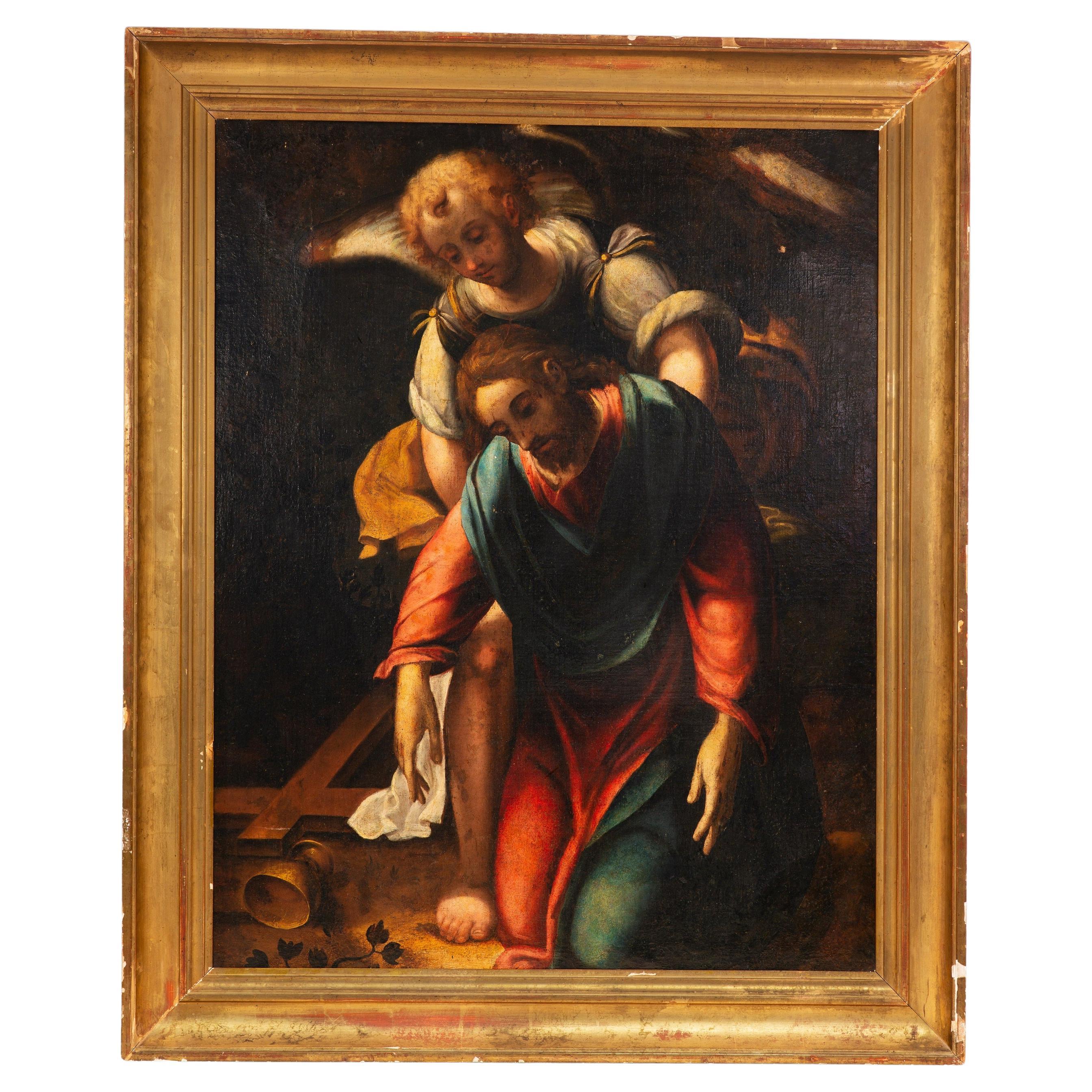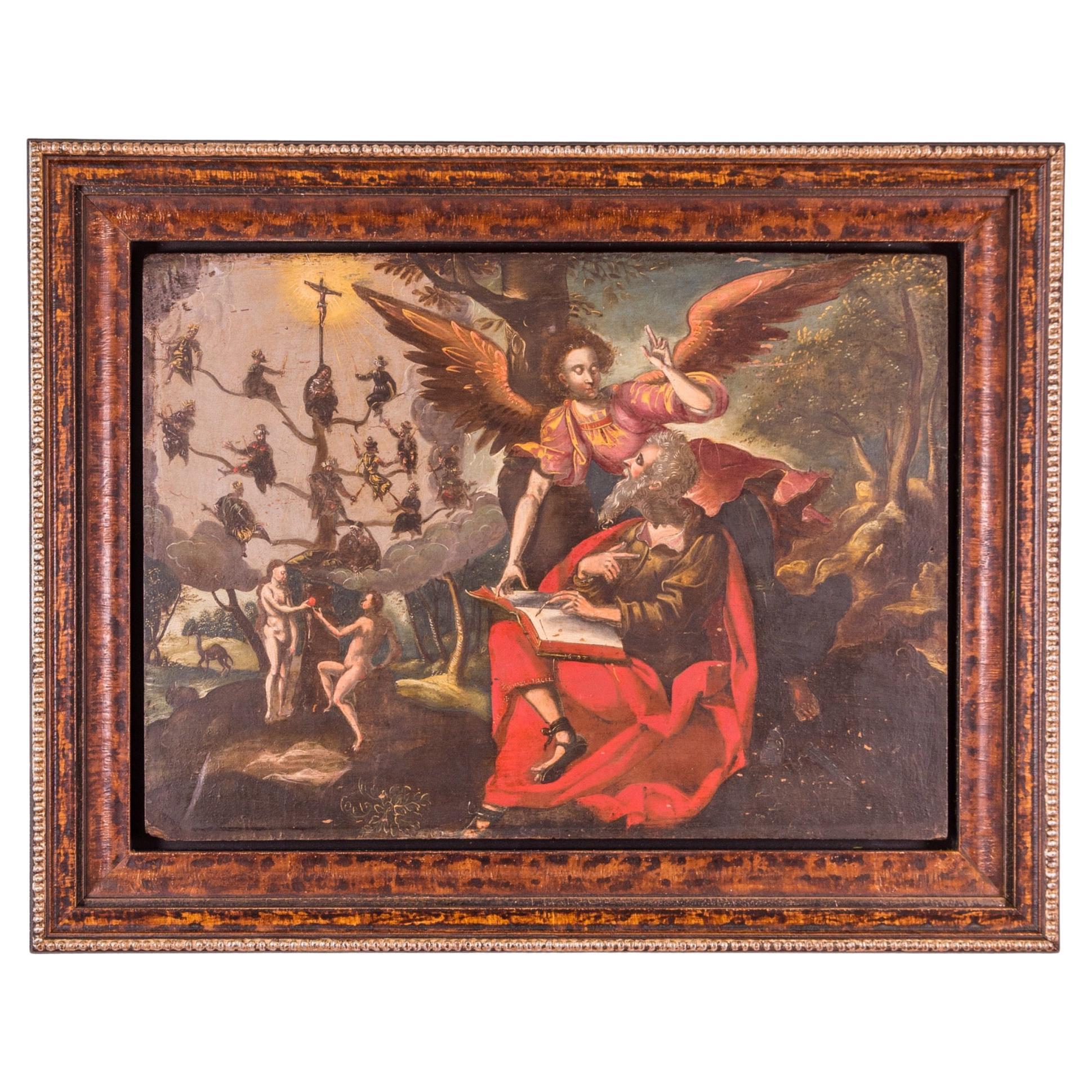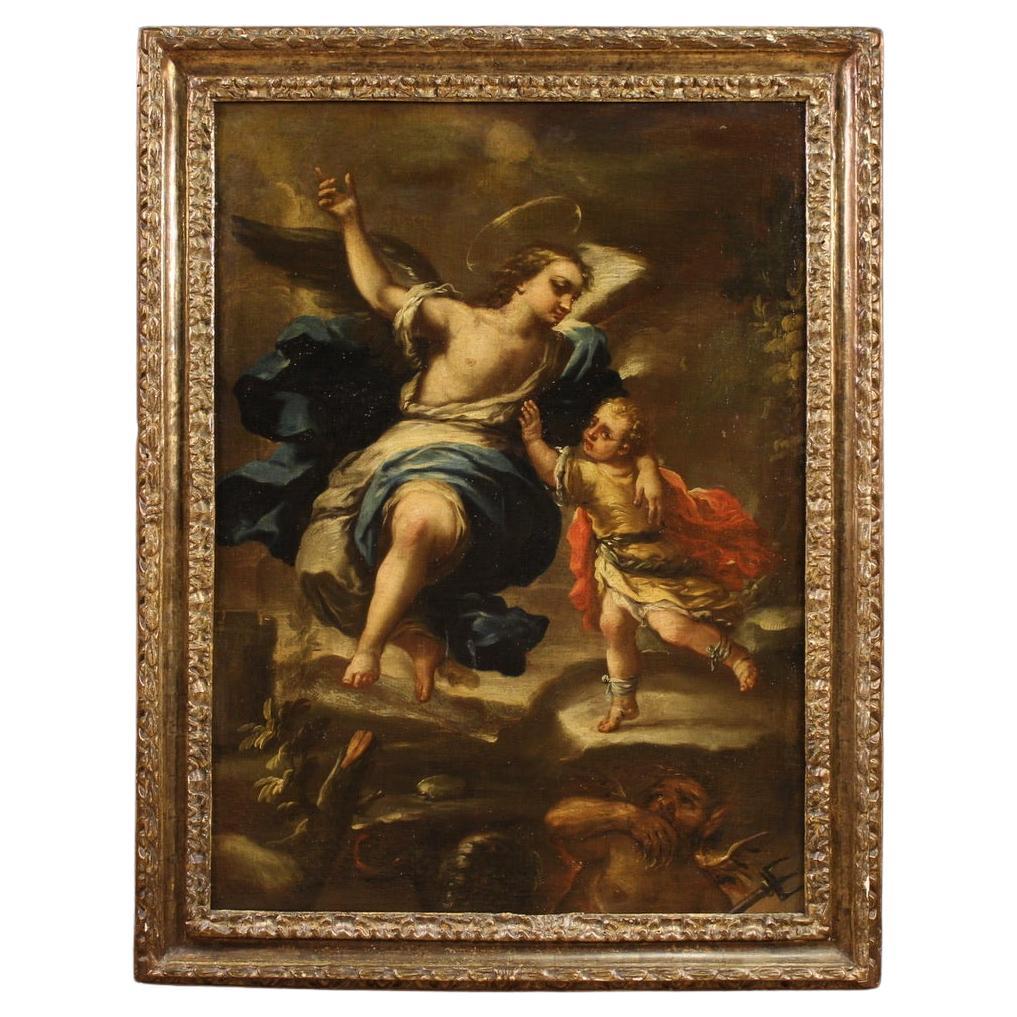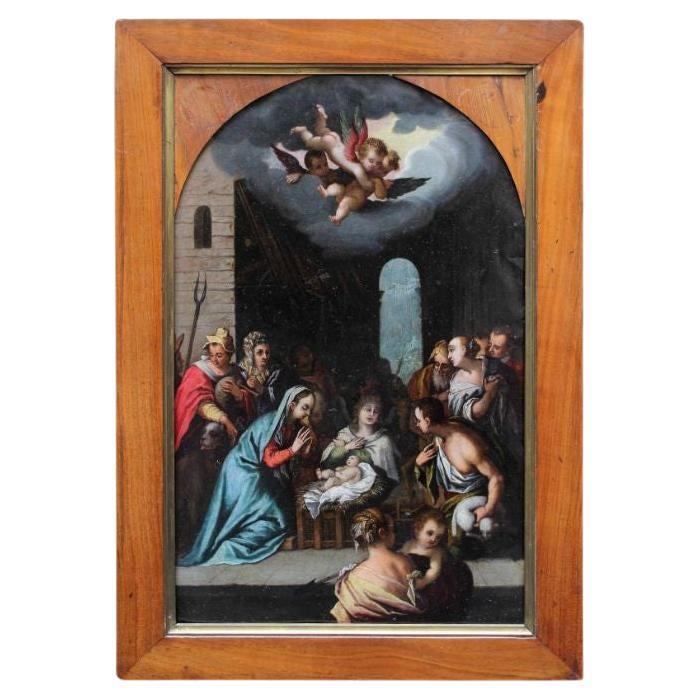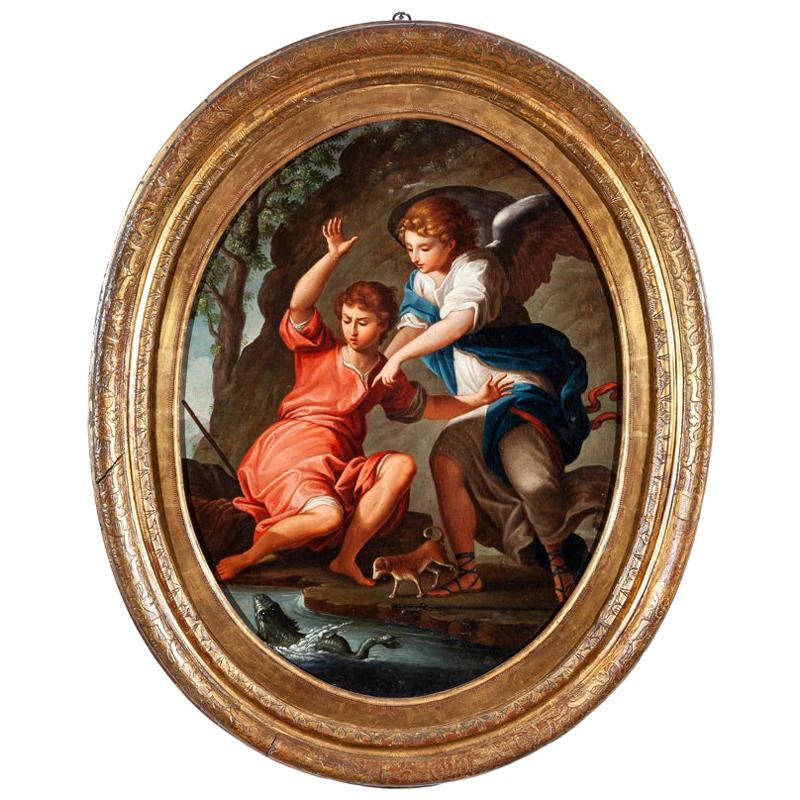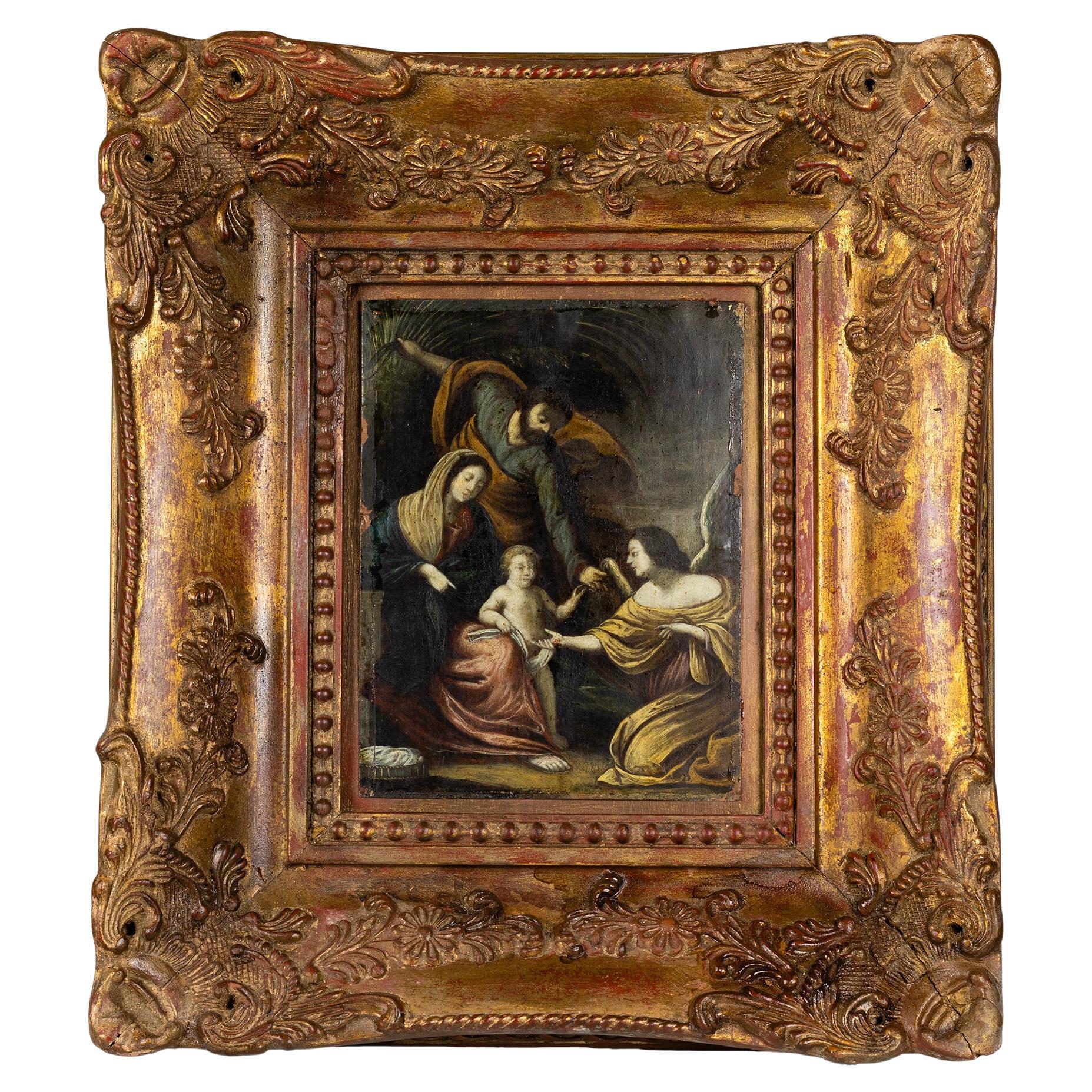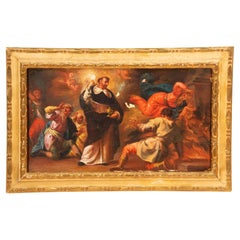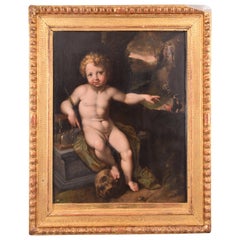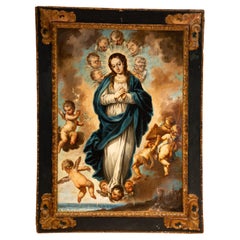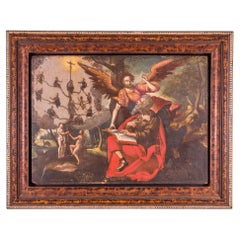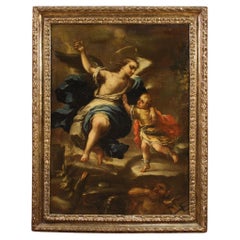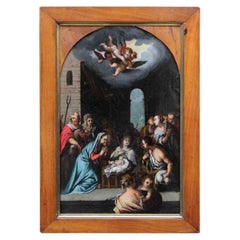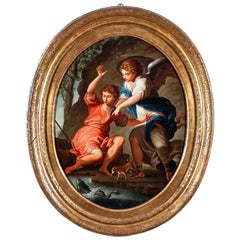Items Similar to Saint Stephen, Oil on Canvas, 17th Century, After Aegidius Sadeler's Engraving
Want more images or videos?
Request additional images or videos from the seller
1 of 10
Saint Stephen, Oil on Canvas, 17th Century, After Aegidius Sadeler's Engraving
$1,795.76
£1,324.65
€1,500
CA$2,488.12
A$2,699.99
CHF 1,430.76
MX$33,114.03
NOK 17,705.50
SEK 16,730.76
DKK 11,422.21
About the Item
Saint Stephen. Oil on canvas. 17th century, following Aegidius Sadeler's engraving (inspired by Jacopo Palma).
The figure of the Saint appears in the foreground, with his arms raised to heaven; To the left of the spectator, the martyrdom of Saint Stephen is shown, under the heavenly appearance of Christ and God the Father; on the other side, there are some constructions and some spectators. Both the composition and the figures show an influence, directly or indirectly from other paintings, of an engraving by Aegidius Sadeler II (1570-1629) based on a Martyrdom of Saint Stephen by Jacopo Palma the Younger (1548-1628) ." ·
Size: 67 x 6 x 83 cms. int 43 x 58 cm
International Buyers – Please note: for those articles that need Export Permits (those older than 100 years), the obtaining of the Permit will be processed without additional expenses, but the period for the obtention of it may vary from 10 to 35 days.
- Dimensions:Height: 32.68 in (83 cm)Width: 26.38 in (67 cm)Depth: 2.37 in (6 cm)
- Style:Baroque (Of the Period)
- Materials and Techniques:
- Place of Origin:
- Period:
- Date of Manufacture:17th Century
- Condition:Wear consistent with age and use. Minor losses. Minor fading.
- Seller Location:Madrid, ES
- Reference Number:Seller: zf07601stDibs: LU2951325776702
About the Seller
4.9
Vetted Professional Seller
Every seller passes strict standards for authenticity and reliability
Established in 1985
1stDibs seller since 2017
350 sales on 1stDibs
Typical response time: 17 hours
- ShippingRetrieving quote...Shipping from: Madrid , Spain
- Return Policy
Authenticity Guarantee
In the unlikely event there’s an issue with an item’s authenticity, contact us within 1 year for a full refund. DetailsMoney-Back Guarantee
If your item is not as described, is damaged in transit, or does not arrive, contact us within 7 days for a full refund. Details24-Hour Cancellation
You have a 24-hour grace period in which to reconsider your purchase, with no questions asked.Vetted Professional Sellers
Our world-class sellers must adhere to strict standards for service and quality, maintaining the integrity of our listings.Price-Match Guarantee
If you find that a seller listed the same item for a lower price elsewhere, we’ll match it.Trusted Global Delivery
Our best-in-class carrier network provides specialized shipping options worldwide, including custom delivery.More From This Seller
View AllChrist with angel. Oil on canvas. 18th century.
Located in Madrid, ES
Christ with angel. Oil on canvas. 18th century.
The painting depicts Christ, dressed, supported by the shoulders or back by an angel, both figures situated in an indeterminate space...
Category
Antique 18th Century Spanish Neoclassical Religious Items
Materials
Other
Saint Dominic. Oil on canvas. Spanish school, 18th century.
Located in Madrid, ES
Saint Dominic. Oil on canvas. Spanish school, 18th century.
It has some faults.
Oil on canvas with a horizontal layout depicting a Dominican wearing the characteristic habit of the ...
Category
Antique 18th Century Spanish Neoclassical Religious Items
Materials
Other
Allegory of Time. Oil on panel. Circle of Jacob de Backer (act. 1571-1585).
Located in Madrid, ES
Allegory of Time. Oil on panel. Circle of Jacob de Backer (act. Antwerp, 1571-1585).
Exhibition: “Reality, time and artifice. Still life and vanitas in baro...
Category
Antique 16th Century Belgian Renaissance Paintings
Materials
Other
Immaculate Conception. Oil on canvas. Colonial school, 18th century.
Located in Madrid, ES
Immaculate Conception. Oil on canvas. Colonial school, 18th century.
Oil on canvas showing the Virgin Mary among angels, in a landscape and standing on a crescent moon, wearing a wh...
Category
Antique 18th Century South American Neoclassical Religious Items
Materials
Other
Assumption of the Virgin Mary, Circle of Van De Kasteele, Frans
By Francesco da Castello
Located in Madrid, ES
Circle of VAN DE KASTEELE, Frans (Brussels, c. 1541 – Italy, 1621). "Virgin with angels and saints". Oil on copper. Curly frame in ebony.
Devotiona...
Category
Antique Early 17th Century Italian Baroque Paintings
Materials
Copper
Gathering of Manna, Oil on Canvas, 17th Century
Located in Madrid, ES
Jews in the desert collecting the Manna. Oil on canvas, XVII century.
Oil on canvas arranged horizontally in which a figurative theme is shown with a mountainous landscape in the ba...
Category
Antique 17th Century Spanish Baroque Paintings
Materials
Other
You May Also Like
Evangelist and Apostle Saint Luke, 1602, Oil Painting
Located in North Miami, FL
Early 17th century German oil painting on chamfered oak panel by Maller Michael Nagel signed in gilt on hem of cloak. The date 1602 is on the edge of the ...
Category
Mid-20th Century German Baroque Paintings
Materials
Canvas, Wood, Paint, Oak
17th Century Oil on Canvas Italian Biblical Painting Tobias And The Angel, 1660
Located in Vicoforte, Piedmont
Wonderful 17th century Italian painting. Oil on canvas artwork depicting Tobias and the angel Raphael, a famous biblical episode from the Book of Tobit. In the story, the young Tobia...
Category
Antique 1660s Italian Paintings
Materials
Canvas
16th Century Adoration of the Shepherds Painting Oil on Copper by Carnevale
By Carnevale Studio
Located in Milan, IT
Domenico Carnevale (Sassuolo, 1524 - Modena, 1579) Adoration of the Shepherds
Oil on copper, 42 x 28 cm
Frame 54 x 36 cm
Expert opinion of Prof. Emilio Negro
The painting represents the Adoration of the Shepherds, the Child in the center, next to the Madonna kneeling in prayer and an angel behind her; towards him in the foreground a woman with a child in her arms, a shepherd with a sheep on the right, a bagpiper on the left and various other male and female characters turn to him. The architectures of the background, between which a glimpse of the landscape can be glimpsed, are hidden in the upper part by the clouds, where a "celestial glory" encamps with three flying angels.
The painting shows mannerist characters that can be traced back to the second half of the sixteenth century, and can be traced back to an author from the Modena area, with stylistic references to the Bolognese Samacchini (1532 - 1577) and Passerotti (1529 - 1592). More precisely, it can be attributed to Domenico Carnevale (1524-1579), one of the most important masters of the sixteenth century active in the local area. The Carnival was formed in Emilia, his homeland, where he worked for many years. However, his works also show a clear Roman influence, dictated by a long experience in the city, during which he also dedicated himself to the restoration of the Sistine Chapel. Trained in the late-mannerist environment of Modena, he is also linked to the Parmesan Corrorese and Ferrarese Dossesque tradition; Carnival also always maintains a slight archaic sentiment in his work,
The main stylistic reference must be identified in a work similar in subject and iconographic setting, coming from the church of the Pio Istituto Orfanelle di San Geminiano di Modena, currently part of the Art Collection of the Province, attributed to the same influence as the Carnival. Another interesting comparison should be identified with A Presentation of Jesus in the Temple...
Category
Antique 16th Century Italian Paintings
Materials
Copper
18th Century Italian "Saint Raphael Archangel" Oil on Canvas with Gilded Frame
Located in Marbella, ES
18th century Italian "Saint Raphael the Archangel" oil on canvas with gilded frame.
Category
Antique Mid-18th Century Italian Paintings
Materials
Canvas, Wood
Religious Oil on Cooper, Baroque Holy Family, 18th Century
Located in Lisbon, PT
This 18th-century Baroque painting presents a tender depiction of The Holy Family with an Angel.
Rendered in oil on copper panel, a common technique of that period for its durability...
Category
Antique 18th Century Italian Baroque Paintings
Materials
Copper
$4,598 Sale Price
21% Off
Tobias and the Angel , Flanders, 17th Century
Located in PARIS, FR
Tobias and the Angel , oil on canvas , Flanders, 17th Century.
Circle of Theodoor van Loon.
Theodoor van Loon (1581 or 1582, in Erkelenz – 1649, in Maastricht) was a Flemish Baroque...
Category
Antique 17th Century Dutch Baroque Paintings
Materials
Canvas
More Ways To Browse
Engraving Religious
Spanish Wood Saint
Spanish Canvas 17th
Antique Religious Statues
Antique Holy Water
Antique Rosaries
Silver Plate Items Silver
Used Church Items
Antique Nativities
Jewish Furniture
Gothic Cross
Spanish Church
European Churches
Religious Plaques
Antique Church Collectibles
Bronze Christ
Wood Crucifix
Religious Reliquary
